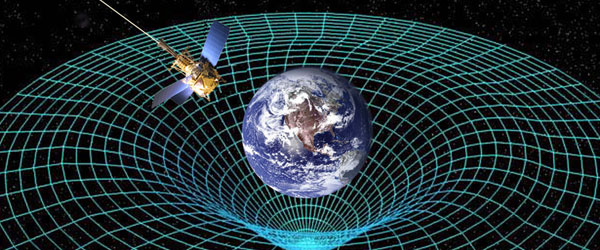What’s so Special About General Relativity? Part II
In the previous article, I covered the Principle of Equivalence and some preliminary concepts that lead up to what is known as the Special Theory of Relativity. Though most people have had some exposure to the consequences of this theory through television, movies, books, or articles, I often find that they really don’t get what it’s all about, or there are misconceptions about what it really means. Being the kind of teacher that digs deep to find ways to simplify complex concepts, I find that it’s hard for many people because it’s usually presented using big numbers or just the letter c. Either approach can go deep enough into levels of abstraction that it just becomes gibberish to many people.
The very first dip into this pool of abstraction in math is going from apples and oranges to numbers, and most handle that fairly well. But introduce fractions, negative numbers, letters, weird symbols, and on and on, and at some point, the student who is just hanging on by their fingertips will fail. It’s not the student’s fault, they just get left behind. Not to say that everyone can master higher Mathematics or Quantum Physics, but I’ve been able to identify which abstract concepts have gone too far for a particular individual, re-presented the concept, and taken said individual past the breakdown to the next level.
Mathematics has its own language; unfortunately, we use the same words as everybody else, and they often mean something completely different. The good teachers are the ones who make the effort to understand why an individual student is lost and find a way to get them through it. I guarantee that that one individual is not alone, and the new route you find will open doors for more than just that one student.
That being said, I’ll take a slightly different approach. Because c is constant, we can chose any value we want and the equations don’t change. Let us suppose that c is 1,000 meters per second (sorry, I’m going to switch to meters; feet and miles just aren’t popular in Science). That’s still pretty fast, about 2,240 miles per hour. Now suppose that my friend Bob is riding on a train, and:
- the train is going 800 meters per second,
- the train is 200 meters long,
- Bob is in the center of the train (100 meters from the front and back),
- there are lights at the front and back of the train that blink simultaneously.

Yes, I see you in the back with the puzzled look on your face, how can I say that the lights blink at the same time? For those that haven’t caught on yet, note that it takes one tenth of a second for light to travel from the front (or back) to the midpoint of the train. If Bob moves far enough forward he will no longer see the lights blink simultaneously; there will be a distinct difference in the time that the light from either end takes to get to his eyes. This is the second lesson of relativity. We can only say that two events occur simultaneously when the light from the two events gets to our eyes at the same time. The bigger lesson here is that pretty much nobody on the train will agree with Bob that the lights blink simultaneously.
Consider this question: how close to Bob do other people on the train have to be so they all agree, within the bounds of human perception, that the lights at the end of the train blink simultaneously? If we consider how modern movies fool our brains into seeing fluid movement by flashing still pictures in front of our eyes one after another, we can answer that question. The current standard in movies is 24 frames per second. This means that each still picture is displayed for about 40 milliseconds (1/24 = 0.042 and a millisecond is 0.001 seconds). In our imaginary world of slowed down light, the distance is 40 meters (1000 * 0.04 = 40), so people sitting in seats 40 meters in front of and behind Bob all agree (to some degree) that the lights are flashing simultaneously. In the world of Physics, we refer to this as a Rest Frame. Within this frame, everyone agrees on what is simultaneous.
In most presentations about the rest frame concept, the talk is usually about high precision clocks and rulers. This can get a bit abstract, so hopefully the addition of the limits of human perception makes things a bit clearer (or muddier). If we were to use the real value of the speed of light, that 40 millisecond range is more like 12 million meters (about 7,500 miles); even I have a hard time thinking about a train that long. The point behind all of this is: even though everything on the train is connected and moving at a constant speed, because the speed of light is finite, not everyone on the train sees the same thing. It should be obvious that I am, standing off to the side as the train speeds by, in a completely different rest frame. There can be no frame that contains Bob and myself; we have to consider what we see from in own frames and then match things up via the constant of the speed of light.
The primary thing that we will disagree on is the path that light takes as it travels from point to point. To get an idea of what I’m talking about, let’s slow the train way down, say 20 miles per hour. Now suppose that Bob has a ball that he is tossing straight up and then catching it. Bob sees the ball go straight up and down into his hand, but I see the ball (and Bob) moving with the train. I see the ball go up at an angle and then come back down at an angle into Bob’s hand. Since we can’t agree on the path that light will take, something else must slip.
Bringing back the original picture, suppose there is another blinking light above Bob’s head. The paths that Bob and I see the light take are similar to the ball. As Bob sees it, the distance that chunk of light from the flash travels is A in the following:

This is what I see as the train passes by. The beam of light travels with the train, the train moves a distance B and the light travels along C:

We can splice these two pictures together to get this:

I’m quite certain that you recognize this and remember our old (really, really old) friend Pythagoras:
$latex C^2 = A^2 + B^2.$
Now we have to figure out what A, B, and C are. Remember that Bob and I both have to agree on how fast the light is moving. In the first picture, Bob uses his clock to measure how long it takes for the light to travel from the roof to the floor; I’ll call that time t, so the distance that it travels is ct. I have my own clock and I see the train passing by with a speed of v. I also see the beam of light travel from the ceiling to the floor, but from my point of view, it takes the angled path. By my clock this takes a time T. During this time segment, I see the train move a distance given by vT and the light beam travels cT. So now we have:

So:
$latex (cT)^2 = (ct)^2 + (vT)^2$
$latex c^2 T^2 = c^2 t^2 + v^2 T^2$
Divide by $latex c^2$ and rearrange a bit:
$latex t^2 = T^2 (1 – \frac{v^2}{c^2})$
Take the square root (it’s okay, everything is positive):
$latex t = T \sqrt{1 – \left(\frac{v}{c}\right)^2}$
This is a relationship between the times that Bob and I measure for the light to travel from the ceiling to the floor of the train. Let’s take a look at this term:
$latex \sqrt{1 – \left(\frac{v}{c}\right)^2}$
Since nothing can go faster than the speed of light, v is always less than c, so v/c is always less than one, as is the square. One minus a number between zero, and one is another number between zero and one and taking square root still is, you guessed it, a number between zero and one. No matter what v is, this term is somewhere between zero and one. It is close to one when v is close to zero, and close to zero when v is close to c. If we use our slow value for the speed of light, then:
$latex t = T\sqrt{1 – \left(\frac{800}{1000}\right)^2}$
$latex t = T\sqrt{1 – 0.64}$
$latex t = 0.6T$
From my point of view, Bob’s clock runs sixty percent as fast as my clock, he measures the speed of light the same as I do, but the light that he sees moves across a shorter distance.
Now this one will make your head explode: if there’s a blinking light on a pole above my head, then Bob will see the exact same picture that I did (just in reverse), and he will say that my clock is running slow. From our own points of view, we both are correct as long as we stay in our own rest frames. This situation is symmetric, we both see the other moving by us at 1,000 meters per second, we both see the other’s clock ticking at a slower rate. To settle the argument about whose clock is slower, one of us has to break that symmetry, either by me jumping in my car and accelerating to catch the train or the train decelerating to a stop. The one that breaks the symmetry loses the argument. Well, not so much lose, but it’s their clock that will be behind, because their frame of reference will be accelerated relative to the other. I’ll get back to that in a future article, and let the abstraction sink in for a bit.
What have we learned?
- People on trains rarely agree on anything.
- Clocks on trains run slow, that’s why the train is always late.
- Everybody is right up until the point that you have to talk to somebody else.





